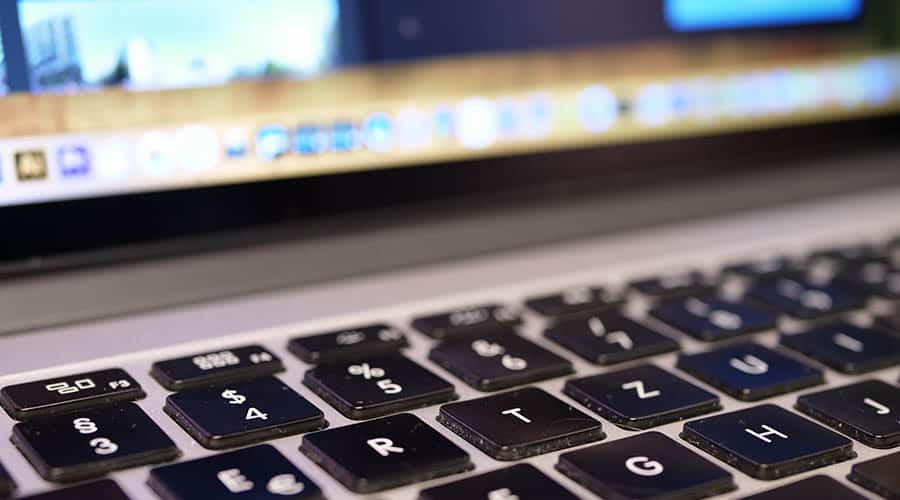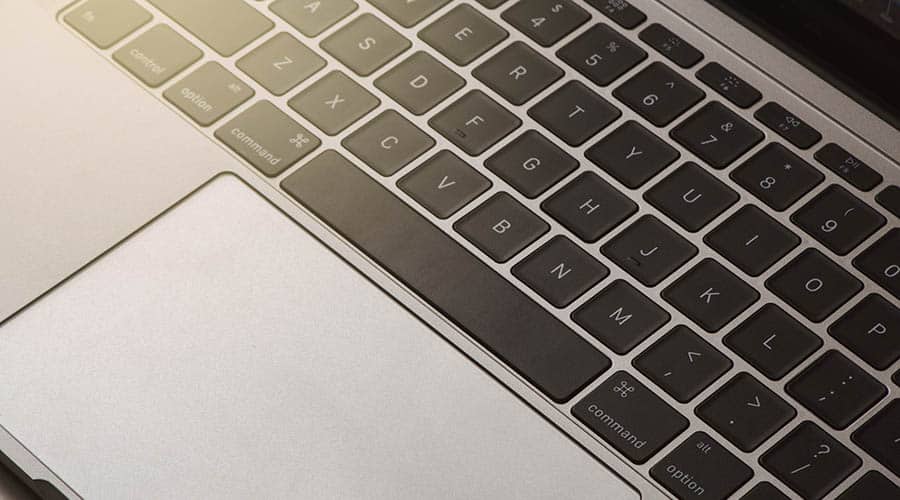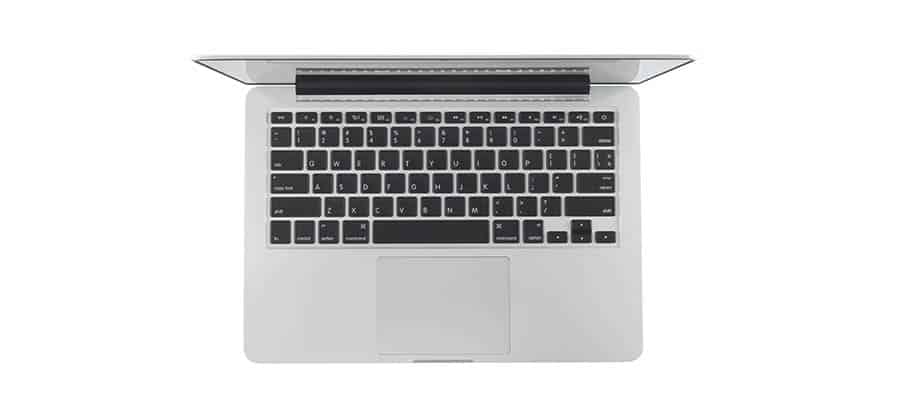It’s no secret that Apple have had a lot of problems with their Macbook keys sticking over the last few years. If you’re suffering with this problem, then you’re not alone, as many folks with Macbooks have had issues with their keyboards.
But if you are having problems with keys sticking or your space bar double spacing, then there are things that you can do about it. It will depend on the type of keyboard that you’re using, as different Apple models use different style of keyboard.
So, let’s recap on the model of Mac you’re using first, and then we can look at how to stop your keyboard sticking.
Macbook Keys Sticking: How to fix Apple’s Keyboard Problem
This isn’t a new problem for Apple. It has occurred in many different models, from the 13 inch Macbook Pro through to the various Macbook Air models as well. Much of the problems come with the design of the keyboard, which we’ll get to in a minute.
To get to the root of the problem, we have to go back a few years to when it first really started. Though many people think it began with the Macbook Pro models Apple were releasing at the time, it was actually the middle child that first had keyboard troubles.
Apple’s Keyboard Issues

So, let’s start this by going through the problems that Apple has had since 2015 with their sticky keyboards, because it’s been pretty well publicised and it’s a common issue.
It all started with the short-lived Macbook released back in 2015, which was essentially designed to be something between the cheaper Macbook Air and the more powerful Macbook Pro.
With this new laptop that Apple had released, they decided to use a butterfly keyboard, which is named as such as beneath the keys on your keyboard, the mechanism used resembles a butterfly. This is in contrast to other styles of keyboard, like a scissor-switch or a mechanical keyboard.
Anyway, with this new Macbook came the butterfly keyboard, and with that keyboard came a whole lot of problems. Apple started to get a lot of complaints of users dealing with sticky keys, the space bar double spacing and in some cases, the keys not working at all.
The roll out across Macbook Air & Pro

Despite the initial negative feedback on the butterfly keyboard, Apple still went ahead and rolled this out across other their other two Macbook products – the Pro and the Air. This started with the Pro in 2016, and it later came to the Air in 2018 as well.
Now, Apple didn’t exactly go ahead and completely ignore the issue, but they thought they could fix it themselves. This involved releasing a 2nd and a 3rd generation of the butterfly keyboard, which used a silicone casing underneath the keys themselves.
It’s thought that this silicone membrane is there to keep the dust and debris from getting stuck underneath the keys. This is the main problem with the Macbook butterfly keyboard, as due to it’s design it’s liable to let dust in underneath the keys themselves, which then results in sticking.
If you’ve bought a Macbook Air or Pro in 2020 or beyond (they discontinued the “Macbook” line in 2019, going back to just the Air and Pro again), then you’ll be pleased to know that Apple have switched back to a scissor-switch style keyboard instead. But, that doesn’t help you if you have a Macbook from a certain year.
The Macbook’s which can have this infamous sticky key issue are;
Now if you have one of these models, then you can get in touch with Apple to see if they’ll fix it for you through their keyboard service program (designed to deal with this issue).
It states that they’ll support any laptop up to 4 years from purchase, so it’s best to get in touch with them ASAP if you’ve got one of these models.
How to Stop your Macbook keys sticking
Now, if you don’t have one of these models above, or you do and you want to try and resolve the problem yourself, then there are some things you can do about sticky Macbook keys.
Make sure you turn your Macbook off when you’re trying any of these techniques, as the last thing you’re going to want to do is damage your keyboard.
Without removing the keys

For those that want to try and get a sticking key working without removing it, then you don’t have many different options to choose from.
If you’re looking for something around the house you can use to fix the problem, then you can try running a toothpick down the side of each of the keys that have the problem.
Essentially, we’re just trying to remove any debris that might have got stuck down there. If there is something stuck down the side of your keys, then it’ll likely stop you from being able to type properly.
Something else you can try is picking up a can of compressed air. You can use this at the side of your keys to help remove anything that’s trapped under the key. The can of air will come with a small straw you can attach to it, and you can place this quite easily at the side of the key.
When you’re doing this, you don’t want to just leave your Macbook stood upright as normal. We’re trying to blow crumbs, dust and whatever else might be stuck under your keys out from underneath. So, tilt your keyboard to a certain angle to remove what’s under the keys.
You can also use isopropanol at the edge of each of your keys as well – getting a small cotton-bud to apply the isopropanol is a good idea key. Use it to clean the edge of your sticky keys.
With removing the keys
Now, if your sticking Macbook keyboard still isn’t fixed, then you’ll want to look at removing the keys themselves. Generally, it’s advised that you get a tool to fix these online, however personally I just use a blunt knife to remove them (not advised).
You can remove the keys quite easily, and this is where the isopropanol comes in handy again. When the key is removed, wipe it down thoroughly with isopropanol, both the key itself and the keyboard.
Make sure to keep hold of all the pieces underneath your keys, as typically they’ll have key carriers underneath – they help your keyboard work properly.
Once you’ve done this, you can go ahead and put your keys back on. This should be a good solution for your sticky keyboard. If this doesn’t fix the issue, then you could look at getting a Magic keyboard instead, or taking it to Apple to get fixed (but for the price, you might as well get a Magic keyboard!).
Conclusion
In conclusion, sticking keys can either be a design flaw with your Macbook, or sometimes is might just happen naturally over time as you used your laptop more. Wear and tear is normal, and sticking keys can typically be a part of that.
Fortunately, there are always going to be fixes that you can use to get your sticky keyboard working again. Usually you can do this without removing the keys individually, as it’s not so easy with the Macbook’s newer Magic keyboard or older butterfly keyboard as it is with a mechanical one.